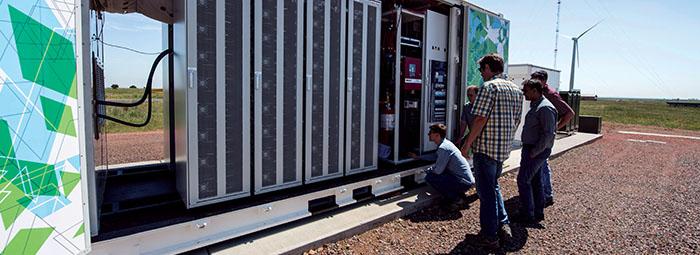
©2021 This excerpt taken from the article of the same name which appeared in ASHRAE Journal, vol. 63, no. 7, July 2021.
About the Authors
Paul Torcellini, Ph.D., P.E., Fellow ASHRAE, principal engineer for the Building Technologies Center at the National Renewable Energy Laboratory, in Golden, Colo. He is vice chair of SPC 228P. Mark MacCracken, P.E., Life Member ASHRAE, president of the Calmac portfolio of Trane and a member of ASHRAE TC 6.9. Ram Narayanamurthy, lead for building programs at the Electric Power Research Institute (EPRI), Palo Alto, Calif. Michael Deru, Ph.D., Member ASHRAE, group manager for Communities and Urban Sciences Research Group at the National Renewable Energy Laboratory, in Golden, Colo. He is a member of ASHRAE TC 2.8. Benjamin Lowe, senior project manager at Roland Berger. Lynn Mueller, president and CEO of Sharc Energy in Vancouver, Canada.
Energy storage is fundamental to our lives—even if we do not realize it. It takes many forms and has long been the stabilizing force for reliable energy. Energy is stored in gas tanks in cars, in coal piles to help the reliability of the power grid, in water reservoirs for hydroelectric systems. It also has a prominent place in the nuclear industry to provide variable loads from fixed-output nuclear power plants. Today, storage is taking on new interest—helping capacity-constrained electrical grids, maximizing the benefit of renewable energy systems and providing resiliency against unknown interruptions in our power supplies.
A panel of experts led by Paul Torcellini, Ph.D., P.E., Fellow ASHRAE, looked at some current trends in energy storage and provide a glimpse of how storage will help move us to a more sustainable future.
Paul Torcellini: Thanks for taking the time to talk about energy storage. We will start the discussion with an overview of your thoughts on what energy storage is. Mark, would you like to start the discussion?
Mark MacCracken: Energy storage goes back to the physics. For example, potential energy could be pumped hydro. Or kinetic energy, where you might have flywheels. You have chemical energy storage for batteries, for giving electrons back. And with thermal energy storage, you can store energy by changing the temperature or changing the phase of something. Each has different characteristics and value as we embrace renewable energy—which is often an intermittent energy source.
Ram Narayanamurthy: From my viewpoint, energy storage is the whole spectrum, whether it’s behind the electric meter, or in front of the meter, or even in terms of gas storage. And the whole world of energy storage is any method by which we can create a disconnect between when energy is generated and when energy is used. So storage could be in different areas. I think in this case, we are focusing on energy storage that’s within the building envelope, which could be thermal storage, active thermal storage, passive thermal storage or battery storage.
Michael Deru: As building engineers, we need to think about how buildings interact with the storage system, how to best control the charging and discharging of the storage. Storage is very important to the future of our energy systems—its value will be maximized based on where it is located and how it is used.
MacCracken: It is important to remember that fossil fuels are a type of stored energy and are dispatchable when you need them. For renewables to be dispatchable, vast amounts of energy storage must be added to both sides of the electric meter.
Torcellini: Going back to what Ram said about storage on the building side of the meter versus on the utility side of the meter: do you think there’s a benefit one way or the other?
Read the Full Article
ASHRAE Members have free access to the full-text PDF of this article as well as the complete ASHRAE Journal archives back to 1997 in the Free Member Access Area.
Non-members can purchase features from the ASHRAE Bookstore. Or, Join ASHRAE!
Return to Featured Article Excerpts
Return to ASHRAE Journal Featured Article Excerpts